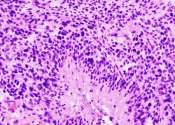Modeling the tumor micro-environment in the lab
For some types of cancer, the human body itself complicates adequate treatment. Connective tissue and the immune system then build a sort of "defensive wall" around the tumor, through which chemotherapy drugs cannot penetrate. ...
Mar 11, 2022
0
11









